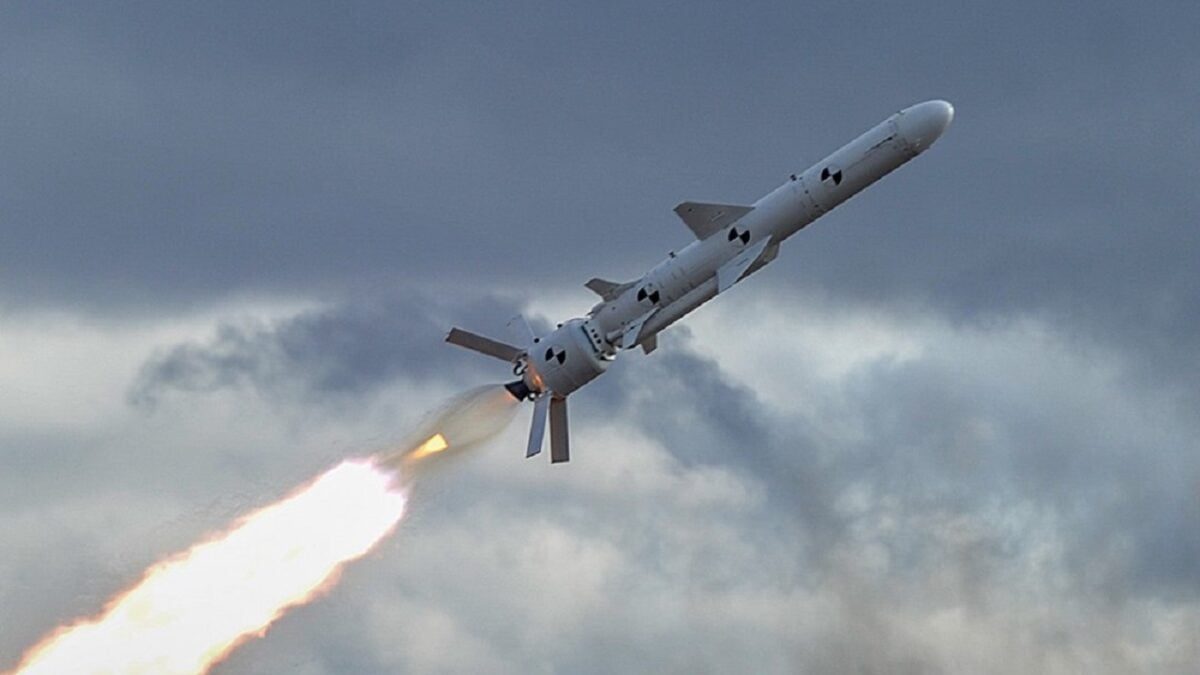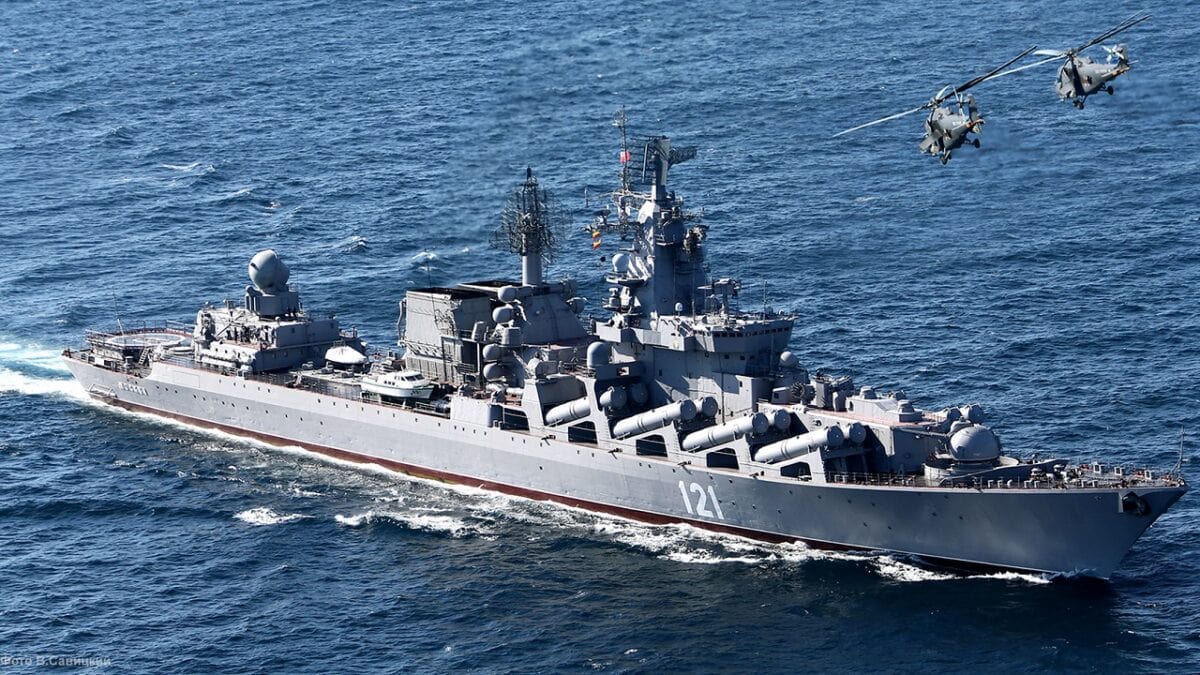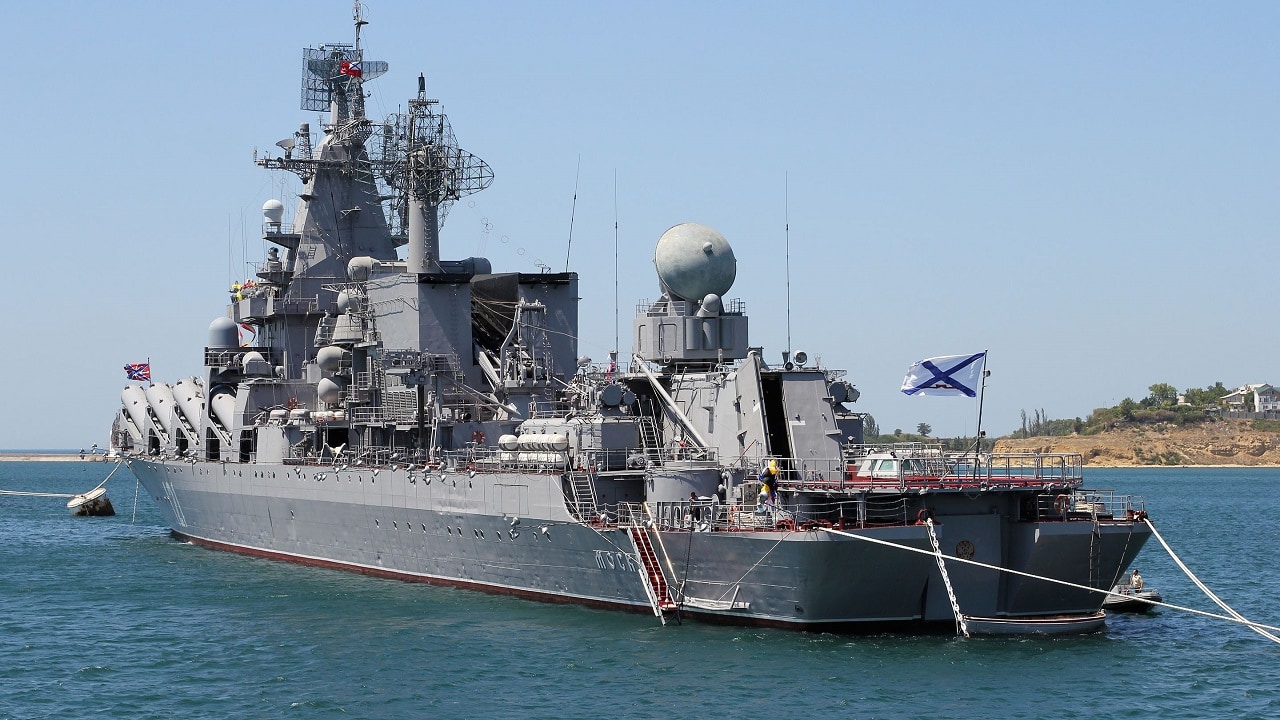The Moskva was taken out by Ukraine’s Neptune anti-ship missiles. Naval history could now shift dramatically: It was the blub blub blub heard ’round the world. On April 15, Russia acknowledged the missile cruiser Moskva, its Black Sea flagship, had sunk while being towed back to port, having been crippled by explosions and ensuing fires. Ukraine claimed that it had hit the ship with two R-360 Neptune anti-ship cruise missiles. Russia disputed the claim, however, the Pentagon corroborates Ukraine’s version.
Russia’s denials notwithstanding, the incident has profound implications, not just for Russia’s war of aggression on its neighbor, but also for the way global naval forces operate and the risks they take.
It’s been 40 years since a ship comparable in size to the 611-meter Moskva was sunk by a hostile force. In 1982, Argentine light cruiser ARA General Belgrano was torpedoed by the Royal Navy submarine Conqueror during the 10-day Falklands War. The last time the world saw hostile ship sinkings and naval warfare on a broader scale was in World War II. Since then, the U.S. and other world powers have been developing and maintaining navies that are hardened and equipped for war, but likely to spend their entire service lives without seeing a peer sea battle.
Moskva’s problematic set-up
How Moskva fared contains lessons on ship design as well as fleet employment, said Jerry Hendrix, a senior fellow with the Sagamore Institute and a retired Navy captain.
Moskva was rendered ineffective by a deck fire made more damaging when it reached the ship’s above-deck missile tubes. The Slava-class cruiser design incorporates 16 launchers for the P-500 Bazalt supersonic cruise missile situated on each side of the ship’s superstructure. Those unprotected missiles can have the effect of friendly fire under the right circumstances.
“Because [the launch tubes] are above deck, it makes them extremely vulnerable to damage and to fragmentation, and then causing damage to its own ship if the ship is hit first,” Hendrix told Sandboxx.
“If the ship does not fire off all of its missiles before it is hit… that missile then has congruences where it cooks off other missiles around it, and the ship virtually self-destructs because of the way it was designed,” he added.
By comparison, the U.S. Navy’s Ticonderoga-class cruisers house their missile tubes below deck. That allows the crew to flood the magazines in case of a fire. This renders the missiles safe in their housings and prevents a disastrous chain reaction, Hendrix explained.
Nonetheless, Hendrix said, the U.S. should heed the lessons of the Moskva and look for opportunities to move external armaments inside the skin of their warships. The Boeing-made, over-the-horizon Harpoon missile, for example, can be housed in above-deck launchers. It has been deployed in that configuration aboard a littoral combat ship and in some older surface ships.
Operating opposite hostile shores
Perhaps more significantly, Moskva’s sinking highlights the necessity of distributed operations in a world where peer and near-peer naval conflict is a real possibility.
Named for Russia’s capital city, Moskva was too much ship for the mission it was given in the Black Sea, Hendrix said. That underscores the value of smaller ships and right-sized missions over bold show-of-force displays.
“One of the things that we often say is, never send a cruiser to do what a frigate is supposed to do. This is a frigate mission; the Black Sea is a constrained water space. And really, there’s not an anti-ship cruise missile mission here,” Hendrix added. “So why is the Moskva in the Black Sea at this point in time? It’s more about prestige. And so, because [the Russians] risked their prestige, they have lost their prestige with this.”
As the U.S. Navy moves forward with plans to build at least 20 new Constellation-class frigates, the successor to the beleaguered LCS, Hendrix suggests that it should also think about operating in a distributed manner. Navy and Marine Corps leaders have for years promoted the concept of Distributed Maritime Operations and Expeditionary Advanced Basing Operations as a way to be more effective across a vast operating area such as the Pacific. Traditionally, though, the Navy deploys with carrier strike groups composed of five or six surface ships clustered around a flattop for defense.

Neptune Anti-Ship Missile. Image Credit: Creative Commons.
“We’re having a very strong conversation now […] about how we disaggregate our force, spread it out across a broad ocean area, not all concentrated together, and then be able to quickly aggregate together to give sort of a compressed pulse of lethality,” Hendrix said. “So we’re working [on] these types of issues. But it’s all based upon the idea that the enemy is going to have a lot of these anti-ship cruise missiles ashore, and it’s going to be very hard to operate anywhere near them.”
Things are getting worse for Russia
For Russia, the Moskva’s sinking is the latest in a series of strategic setbacks: The deputy commander of Russia’s Black Sea Fleet, Captain 1st Rank Andrei Nikolayevich Paly, was reportedly killed in combat in the Ukrainian city of Mariupol in March. Ukrainian officials say seven Russian generals have been killed in the fighting, though not all deaths are confirmed. After a lengthy assault on Kyiv, Russian troops withdrew from the city earlier this month without having gained control of it.

Moskva Cruiser. Image Credit: Creative Commons.
“I think that the military in Russia is increasingly looking at this as they’re being bled out,” Hendrix said. “The Slava class is a major capital asset – it’s a large portion of their navy and their budget. So I think that there’s going to be increased pressure inside the Russian military to re-examine this war and how it’s being executed.”
Even the specific loss of the Moskva is significant: early in the conflict, Russian naval forces had attacked Ukraine’s Snake Island which was defended by a few dozen Ukrainian troops. In a recorded exchange, a Ukrainian border guard refused to surrender, saying, “Russian warship, go f— yourself.”
That ship was Moskva.
Hope Hodge Seck is an award-winning investigative and enterprise reporter who has been covering military issues since 2009. She is the former managing editor for Military.com. This first appeared in Sandboxx News.

